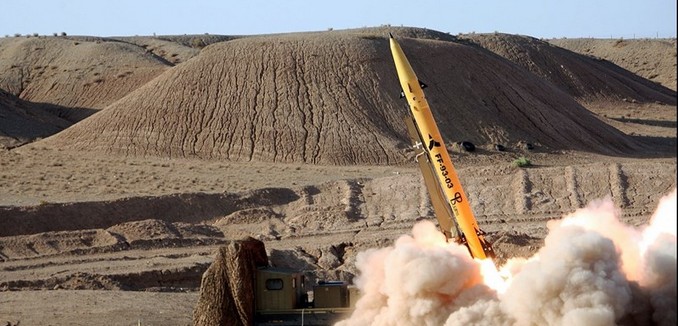New details have emerged about underground weapons factories that Iran is building for its proxy group Hezbollah in Lebanon, The Times of Israel reported Monday.
The existence of the factories was first reported in March by a Kuwaiti newspaper quoting an unnamed Iranian Islamic Revolutionary Guard Corps (IRGC) general.
Last week, IDF Chief of Staff Lt. Gen. Gadi Eisenkot told a Knesset committee that Israel was aware of the factories and was “working against it using quiet measures to avoid a deterioration of the situation.”
The French magazine Intelligence Online recently published a report identifying the locations of two weapons factories and the munitions they produce. One underground facility, located near Hermel in northeastern Lebanon, reportedly produces Fateh 110 rockets that can carry half-ton warheads and have ranges of about 190 miles, enough to reach most of Israel. The Fateh 110 rockets are considered to be relatively accurate, and Israel’s David’s Sling air defense system, which became operational in April, is designed to intercept them.
A second factory located near the Mediterranean coast in southern Lebanon manufactures smaller munitions, according to Intelligence Online.
The Iranian general who first revealed the existence of the factories said that they were built because Israel had destroyed munitions factories in Sudan and hit weapons convoys in Syria en route to Hezbollah.
Iran is banned from exporting weapons by the United Nations Security Council, and is specifically forbidden from arming Hezbollah by Security Council resolution 1701.
In May, former Israeli ambassador to the UN Ron Prosor wrote an op-ed calling on the world community to take action against Hezbollah, which he said has grown stronger than most NATO nations. He urged the Security Council to strengthen and enforce resolution 1701, in line with Chapter 7 of the UN’s charter, which mandates peace enforcement.
According to a July 2016 report by the Foundation for Defense of Democracies, Israeli officials believe that any future war with Hezbollah has the potential to cause “thousands of civilian deaths” in Israel. Hezbollah has, among other things, threatened to attack ammonium tanks in Haifa, which could kill tens of thousands of people.
Jonathan Schanzer, senior vice president of the Foundation for Defense of Democracies, explained that month that Hezbollah’s widely-reported tactic of hiding military assets in civilian areas would lead to mass casualties. Reports emerged in 2013 that Hezbollah was offering reduced-price housing to Shiite families who allowed the terrorist group to store rocket launchers in their homes. An Israeli defense official told The New York Times in May 2015 that the buildup of Hezbollah’s terror infrastructure in southern Lebanese villages meant that “civilians are living in a military compound” and that their lives were at risk. A few days later, a newspaper linked to Hezbollah bolstered the Israeli assessment.
Brig. Gen. (res.) Nitzan Nuriel, a former director of Israel’s Counter-Terrorism Bureau, said in March that another war between Israel and Hezbollah was “only a question of time” due to the Iranian proxy’s efforts to acquire “game-changing weapons.” A week later, Eisenkot assessed that Hezbollah is building up its arsenal in Lebanon, which will bear the brunt of any future conflict between the Iranian proxy and Israel. Israeli security officials warned earlier in March that the Lebanese army, which receives American military aid, will likely fight alongside Hezbollah in a war against Israel.
[Photo: Tasnim News ]




